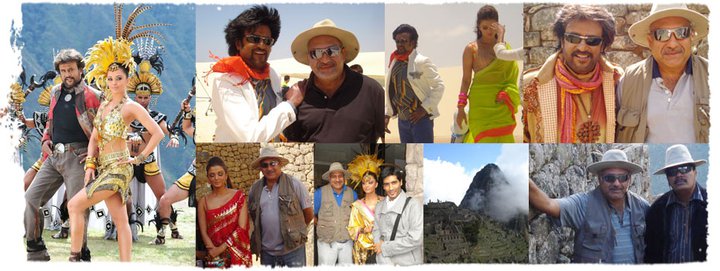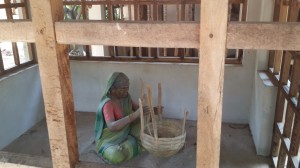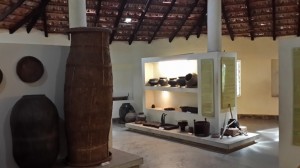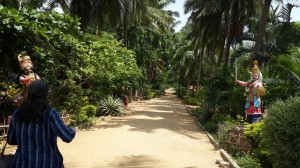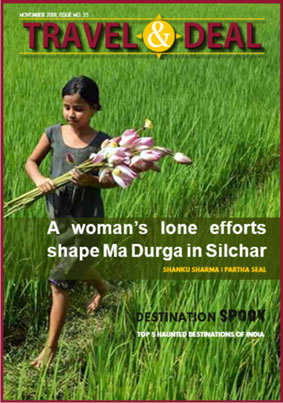Rendezvous with Natarajan Ramji - Hema Iyer Ramani
“Every block of stone has a statue inside it and it is the task of the sculptor to discover it.” -Michelangelo
When Natarajan Ramji (Chairman and MD, Film Tourism-TMIC) looks at a new location, he actually looks at the film sequence that can be shot there – he sculpts an imaginary sequence and once the idea becomes one with him , Ramji goes ahead to bring the director ! Today, he has more than a thousand films for which he has provided the location. It is no surprise then that he has been christened Location Guru especially in the film circles.
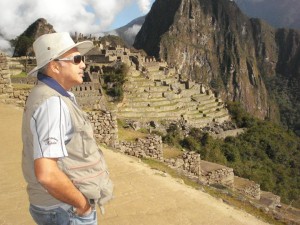 Ramji loves to travel, and how! Like many who try to get into a line of work or learn a trade, Ramji got into travel business too. At this time, he also got into some acting roles but did not get the role that would shape his career!
Ramji loves to travel, and how! Like many who try to get into a line of work or learn a trade, Ramji got into travel business too. At this time, he also got into some acting roles but did not get the role that would shape his career!
When travel agents were being taken off the map, Ramji created new roads combining two areas that he had already evinced interest in – travel and films. The first break came to him with the Telugu film Rudra Netra (with Chiranjeevi) which was the first project that he handled independently.
From then on, places soon became ‘locations’, and he began looking at places with his ‘location’ eyes. He found himself in Malaysia, Singapore, Thailand and the Far East in the 1990s promoting to the film-makers, the scenic beauty that had bewitched him. By 1997, New Zealand had his attention, and Ramji admits, it is a place he has visited more than 38 times. The joy of being able to shoot all year round made NZ a land of all seasons- the fresh green of Spring would bring in the warm tones of yellow gold, only to soon usher the mature deeper tones that Autumn would bring. Winter would bring the purity of a virgin clad in snow- these appealed to Ramji, the variety that Nature paraded in, almost as if She beckoned the actresses to compete with Her in the Cat-Walk!
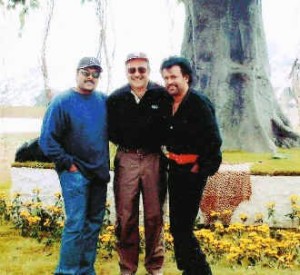 He speaks with passion about the changing landscapes, the texture and tones of colours that She cloaks herself with. He speaks about the sheep that are larger in number than the human population – the sheep dogs that respond to the sound of the whistle knowing that they have to round up the herd to be brought back ! I was reminded of Christopher Plummer in the film Sound of Music blowing a whistle to call out each of his children. The sight of the wide pastures, swift flowing rivers, gardens and orchards proudly displaying the fruits of their labour all naturally mesmerized him, and he wanted to share the magic of each moment caught in the lens of his eyes being translated into magic for a larger audience by the filmmaker himself. New Zealand was highly westernized and provided accessibility through its roads which ran around the most picturesque landscapes. An eight-hour long drive from Queenstown to Christchurch and back would take him through lush meadows, quaint little towns of Geraldine, and then the Lake Tekapo with its mountains – the changing landscape of the mountains clothed in white to only burst into flames in Autumn was definitely an inspiration for young lovers, who like the very cold mountain in Winter would soon be ablaze like the very mountain once they were in love! What a perfect situation song!
He speaks with passion about the changing landscapes, the texture and tones of colours that She cloaks herself with. He speaks about the sheep that are larger in number than the human population – the sheep dogs that respond to the sound of the whistle knowing that they have to round up the herd to be brought back ! I was reminded of Christopher Plummer in the film Sound of Music blowing a whistle to call out each of his children. The sight of the wide pastures, swift flowing rivers, gardens and orchards proudly displaying the fruits of their labour all naturally mesmerized him, and he wanted to share the magic of each moment caught in the lens of his eyes being translated into magic for a larger audience by the filmmaker himself. New Zealand was highly westernized and provided accessibility through its roads which ran around the most picturesque landscapes. An eight-hour long drive from Queenstown to Christchurch and back would take him through lush meadows, quaint little towns of Geraldine, and then the Lake Tekapo with its mountains – the changing landscape of the mountains clothed in white to only burst into flames in Autumn was definitely an inspiration for young lovers, who like the very cold mountain in Winter would soon be ablaze like the very mountain once they were in love! What a perfect situation song!
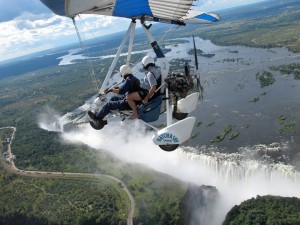 Until the year 2005, Ramji spent time choosing locales between NZ and Switzerland. He speaks about the 25-day window that the crew would have to be ready to shoot the tulips in bloom. The need to constantly re-invent himself without falling into the safety of a comfort zone, inspired him to search for new locales, hitherto not ventured into at least by the Indian film industry. So if it was Peru and Brazil in 2005, he slowly moved towards the Silk route, and then to more exotic locales. By the end of each film, Ramji began to set a new benchmark for himself, and the bar he set was so high that he often felt the need to improve on the previous venture.
Until the year 2005, Ramji spent time choosing locales between NZ and Switzerland. He speaks about the 25-day window that the crew would have to be ready to shoot the tulips in bloom. The need to constantly re-invent himself without falling into the safety of a comfort zone, inspired him to search for new locales, hitherto not ventured into at least by the Indian film industry. So if it was Peru and Brazil in 2005, he slowly moved towards the Silk route, and then to more exotic locales. By the end of each film, Ramji began to set a new benchmark for himself, and the bar he set was so high that he often felt the need to improve on the previous venture.
He speaks of the beautiful oceanic island of Sipadan located in Celebes Sea off the East coast of Malaysia. He says it is one of the most beautiful scuba diving spots. “When one steps into the sea, about 10,000 fish come close to you, and when you just stretch your hand to touch them, they would glide away”. 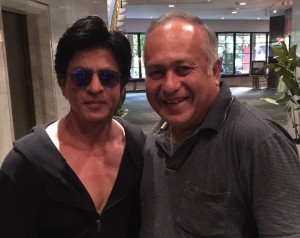 It is perhaps like the very fans who come to swarm the stars, and the magic remains only as long as they choose to stay aloof too. Neither the fans nor the stars themselves wish to expose the feet of clay. He fondly remembers Scarface, the fish that would surface near the kitchen at the hotel he stayed because he had become old and could not get his own food. So every noon, at lunch time, he would appear, waiting for the Chef to feed him ,and it was almost as if Scarface had a mental clock because he would just surface up for food at the perfect time each day !
It is perhaps like the very fans who come to swarm the stars, and the magic remains only as long as they choose to stay aloof too. Neither the fans nor the stars themselves wish to expose the feet of clay. He fondly remembers Scarface, the fish that would surface near the kitchen at the hotel he stayed because he had become old and could not get his own food. So every noon, at lunch time, he would appear, waiting for the Chef to feed him ,and it was almost as if Scarface had a mental clock because he would just surface up for food at the perfect time each day !
If there is one place that fascinates Ramji, it is the Danum Valley in Borneo rainforests. Trees would rise to grow to 200 ft, and some so wide that it would require 15-20 people forming a chain to clasp it! Ramji is hugely disappointed that he never got permission to shoot in the forests of Borneo. Yet, on a lighter vein, I know it would have been hugely impossible for our stars to go around the trees in the rainforests or perhaps even go on those canopy walks halfway up those tall trees for those song-sequences! But Borneo holds its magic to Ramji because he can still hear the call of the hornbill, the Proboscis monkey, the orang-utans or the pygmy elephants even as he closes his eyes to relive the memory of the blue-roofed cottages where the quiet river runs ever so softly, and where the tallest men still get dwarfed by the shortest trees of Borneo. Borneo reminds him constantly that no matter how high he climbs, he still has miles to go.
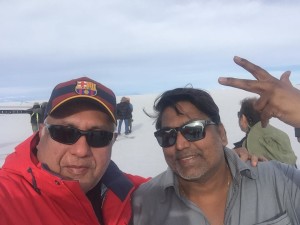 He speaks with excitement about Salar de Uyuni, the world’s largest salt flat located in South Bolivia. The Telugu film song (Telusa, Telusa) did total justice capturing the landscape of the salt flat and the cactii-studded islands that would tower over men. I also found the Red Sea beach characterized by red algae shot in China absolutely mesmerizing (again captured beautifully in the song Pookkalae Sattru Oyivedungal from the Tamil movie “I”). If it is Georgia and Ukraine one month, it could be the Balkans next month, and Ramji is not complaining. He absorbs not only the landscapes around him, he also devours the culture of each of the places he visits paying attention to little details that are gently stored away in his memory for future reference.
He speaks with excitement about Salar de Uyuni, the world’s largest salt flat located in South Bolivia. The Telugu film song (Telusa, Telusa) did total justice capturing the landscape of the salt flat and the cactii-studded islands that would tower over men. I also found the Red Sea beach characterized by red algae shot in China absolutely mesmerizing (again captured beautifully in the song Pookkalae Sattru Oyivedungal from the Tamil movie “I”). If it is Georgia and Ukraine one month, it could be the Balkans next month, and Ramji is not complaining. He absorbs not only the landscapes around him, he also devours the culture of each of the places he visits paying attention to little details that are gently stored away in his memory for future reference.
With Dilwale, and the shooting of Gerua song in Iceland with the charismatic heart-throb Shah Rukh Khan and the inimitable Kajol, Ramji reached a big high. He was also able to convince Ajay Devgn to re-shoot portions of Shivaay in Bulgaria (after Canada not working out well). But the momentum rose to an all time high with the Superstar Rajnikanth for the film Enthiran, when he suggested the location of Machu Picchu in Peru, the 15 Century Inca citadel.
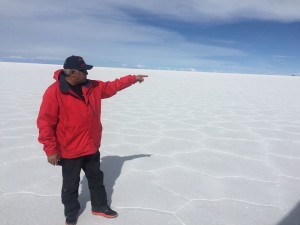 And as in any other trade, when a big film happened with a big star, ‘locations’ received notice like never before.
And as in any other trade, when a big film happened with a big star, ‘locations’ received notice like never before.
When I asked Ramji where his soul was, and which place did he feel closest to, he answered very simply: “Everywhere. You can say my soul can be found in each of these places.” Somehow, I found myself understanding him- like the mariner who has a girl at every port, Ramji had a film for every location, and so his soul was all over the globe very naturally.
“I saw the angel in the marble and carved until I set him free.”
Like Michelangelo, Ramji sets each location free when he finds the perfect film to go with it. It is no small wonder then that he is toasted by the Film, Hotel, Travel and Tourist industries all at once. Yes, he has interacted with the leading directors and actors , been to the best places- yet, his career is not one of glamour alone- it is the same effort that a classical musician puts in to make a complicated rendering 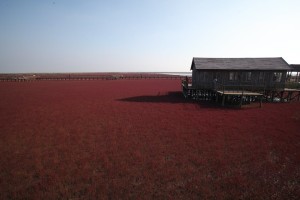 seem simple at the first note. Even as I sign off, I hear he is sitting on the banks of the Dnieper river, continuing to be fascinated by all that he sees around him. I realize other passports may get a complex when they see Ramji’s - for his is one that will have tattoos on every page ! I recently read a message somewhere: “ Of all the books in the world, the best stories are found between the pages of a passport.” (Anonymous). Ramji’s passport is a truism to this .
seem simple at the first note. Even as I sign off, I hear he is sitting on the banks of the Dnieper river, continuing to be fascinated by all that he sees around him. I realize other passports may get a complex when they see Ramji’s - for his is one that will have tattoos on every page ! I recently read a message somewhere: “ Of all the books in the world, the best stories are found between the pages of a passport.” (Anonymous). Ramji’s passport is a truism to this .
————————————————————————————————————————–
( A former lecturer of Political Science at Mount Carmel College,Bangalore , Chennai-based writer Hemalatha Ramani contributes to newspapers, magazines and blogs. She is the author of a travel book, Soulscapes:Travels and Conversations in India) She writes under the name of Hema Iyer Ramani.

